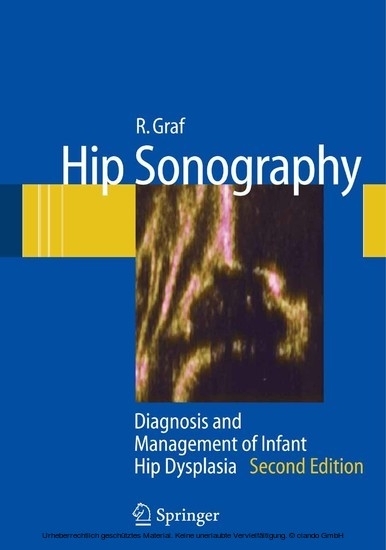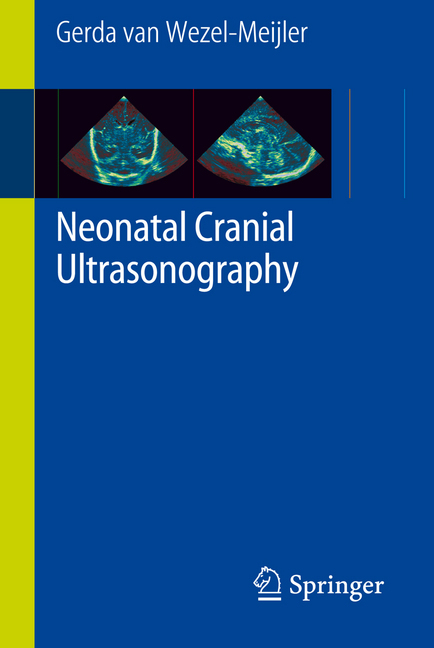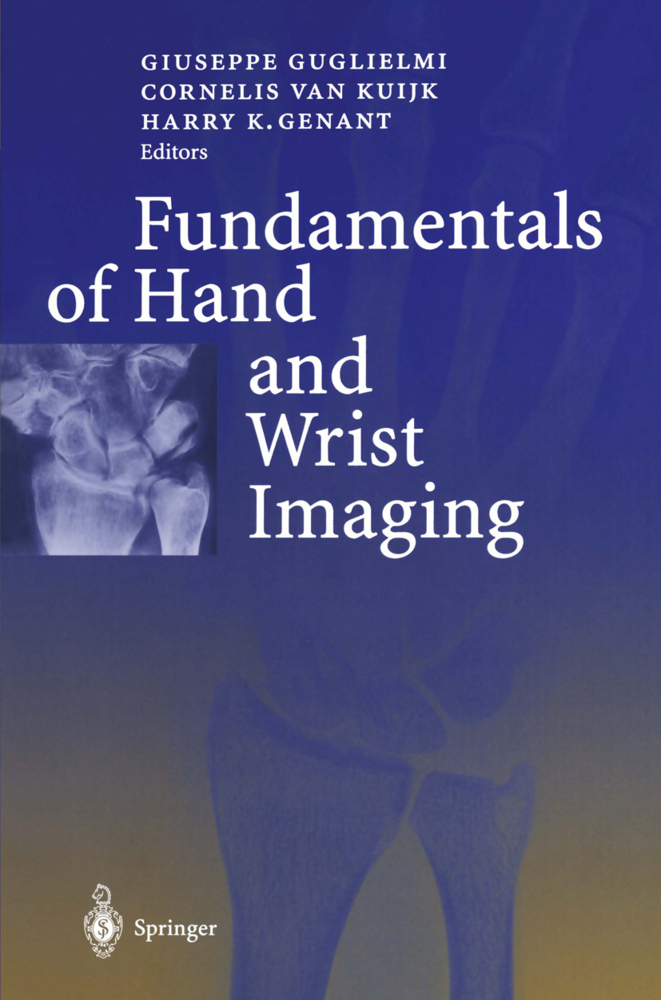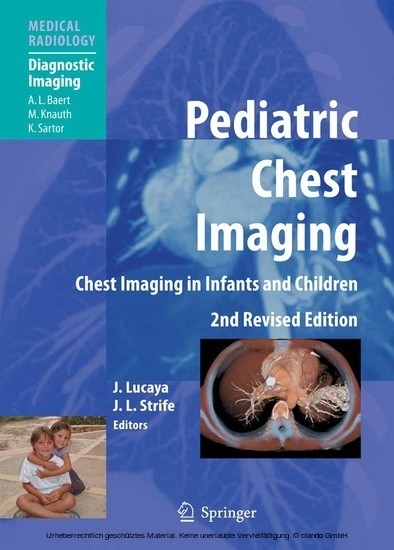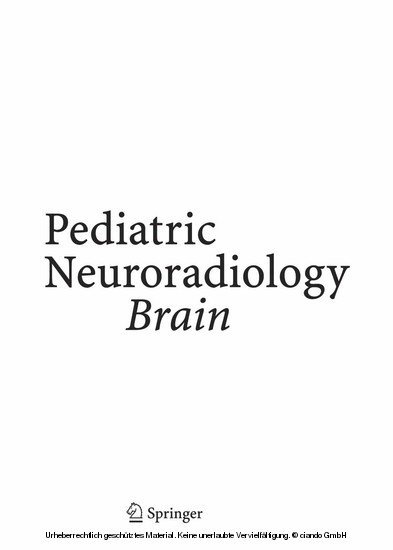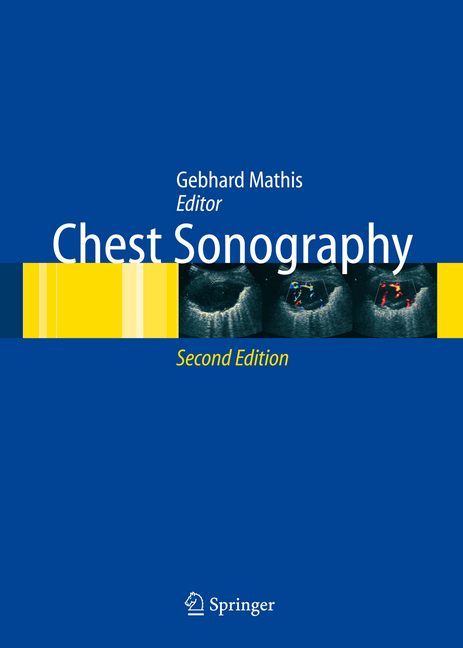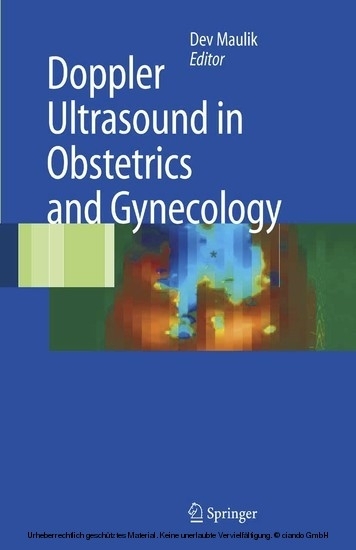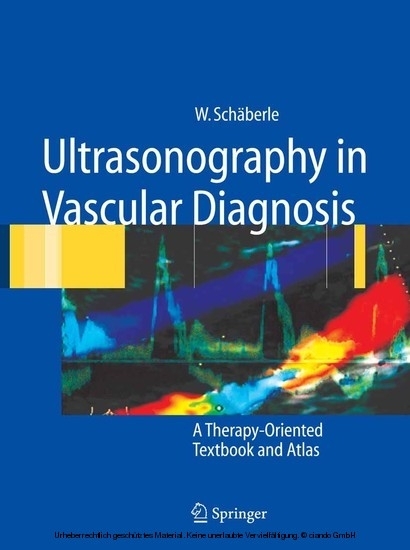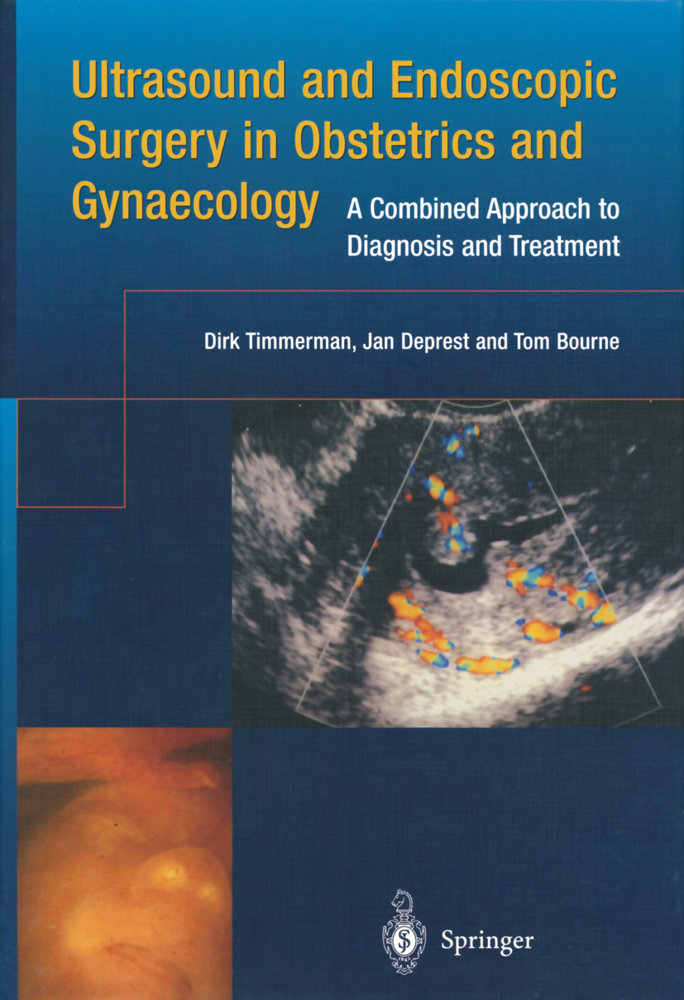Hip Sonography
Diagnosis and Management of Infant Hip Dysplasia
Sonography of baby hips for the diagnosis of DDH and dysplasia has grown steadily in importance in recent years. A strict standardized technique for investigation of the baby and interpretation of the sonograms has made hip ultrasound reproducible, reliable and independent of examiner skill and experience.
Graf s technique is now used worldwide, and selective or even general screening programmes for all babies are established in many European countries today.
The first part of this book includes the fundamentals of hip sonography, static as well as dynamic techniques, anatomical identification of the echograms, typing, a measurement technique and usability check.
The second part is an atlas including a summary of the essential data and demonstrating correct and incorrect sonograms in different variations. The book is indispensable for everyone dealing with DDH problems in diagnosis and therapy.
Graf s technique is now used worldwide, and selective or even general screening programmes for all babies are established in many European countries today.
The first part of this book includes the fundamentals of hip sonography, static as well as dynamic techniques, anatomical identification of the echograms, typing, a measurement technique and usability check.
The second part is an atlas including a summary of the essential data and demonstrating correct and incorrect sonograms in different variations. The book is indispensable for everyone dealing with DDH problems in diagnosis and therapy.
1;Contributors;8 2;Acknowledgement;9 3;Foreword;10 4;Introduction;12 4.1;Where Is the Problem?;12 4.2;How to Solve the Problem;12 4.3;How to Use This Manual;13 5;Contents;14 6;1 Technique;16 6.1;1.1 Equipment;17 6.2;1.2 Additional Equipment for Hip Ultrasound;17 6.3;1.3 Image Projection;17 7;2 Anatomy and Ultrasound of the Normal Infant Hip Joint;20 7.1;2.1 Explanation of Terminology Used in Describing the Ultrasound Anatomy;21 7.2;2.2 Ultrasound Characteristics of the Different Tissues in the Region of the Hip Joint;21 7.3;2.3 The Proximal Femur in Hip Ultrasound;21 7.4;2.4 Femoral Head;22 7.5;2.5 The Acetabulum (Fig. 2.8);29 8;3 The Standard Plane;34 8.1;3.1 The Principle of the "Standard Plane";35 8.2;3.2 The Problem of the Variable Bone Coverage of the Femoral Head;36 9;4 Identifying the Anatomy and Checking the Landmarks and Tilting Eff ects;42 9.1;4.1 Anatomical Identification;43 9.2;4.2 Checking the Landmarks;43 9.3;4.3 Checking a Hip Sonogram;45 10;5 Definition of Types;46 10.1;5.1 Type I;48 10.2;5.2 Type II;49 10.3;5.3 Type III;49 10.4;5.4 Type IV;50 10.5;5.5 Differentiation Between Ossification and Degeneration;50 11;6 Ultrasound Classification;54 11.1;6.1 Description;55 11.2;6.2 Systematic Reporting of a Sonogram;58 12;7 Measurement Technique;60 12.1;7.1 The Bony Roof Line ( Fig. 7.1a);61 12.2;7.2 Base Line ( Fig. 7.2a - c);61 12.3;7.3 Cartilage Roof Line ( Fig. 7.3a - c);63 13;8 Classification Using the Sonometer;66 13.1;8.1 The Alpha Values;67 13.2;8.2 The Beta Value;68 13.3;8.3 Classification in Premature Infants 8.4 Certainty of the Diagnosis;70 14;9 Instability;72 14.1;9.1 Elasticity " Elastic Whipping" ( Fig. 9.1. b - d);74 14.2;9.2 Pathological Instability;75 14.3;9.3 Summary of the Principal Differences Between Elasticity and ( Pathological) Instability;75 15;10 The Terminology of Dislocation;76 16;11 Scanning Technique;78 16.1;11.1 Preparation;79 16.2;11.2 Leading and Guiding the Mother;79 16.3;11.3 Scanning Procedure;80 16.4;11.4 Errors;84 17;12 Errors Due to Tilting the Probe;90 17.1;12.1 Antero- posterior Tilting;91 17.2;12.2 Postero-anterior Tilting;91 17.3;12.3 Cranio- caudal Tilting;91 17.4;12.4 Caudo- cranial Tilting;91 17.5;12.5 Cradle and Probe- Guiding Equipment ( Figs. 11.1c, 11.4b);92 18;13 Documentation and Quality;96 18.1;13.1 Image Documentation;97 18.2;13.2 Written Report;97 18.3;13.3 Tips for Checking and Ensuring the Quality of One's Own Sonograms;97 19;14 Principles of Ultrasound- Based Management;98 19.1;14.1 Basic Biomechanical Aspects Behind the Principles of Treatment;99 19.2;14.2 Goals of Treatment;99 19.3;14.3 Stages of Treatment;99 19.4;14.4 Why Errors Occur;108 20;15 Appendix;110 21;Suggested Reading;122
Graf, Reinhard
| ISBN | 9783540309581 |
|---|---|
| Artikelnummer | 9783540309581 |
| Medientyp | E-Book - PDF |
| Auflage | 2. Aufl. |
| Copyrightjahr | 2006 |
| Verlag | Springer-Verlag |
| Umfang | 114 Seiten |
| Sprache | Englisch |
| Kopierschutz | Digitales Wasserzeichen |

